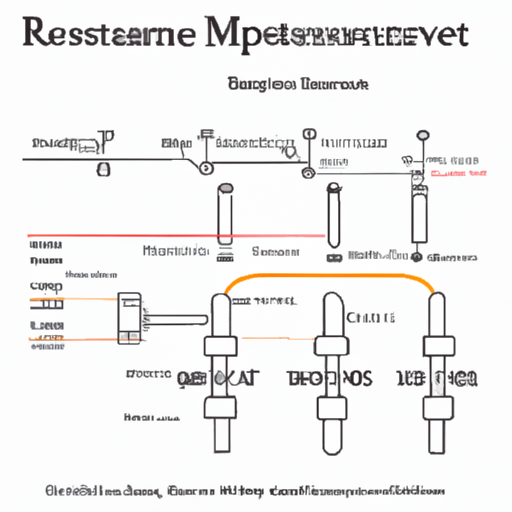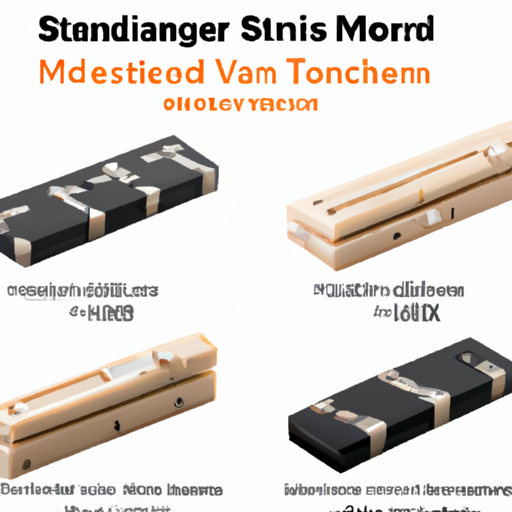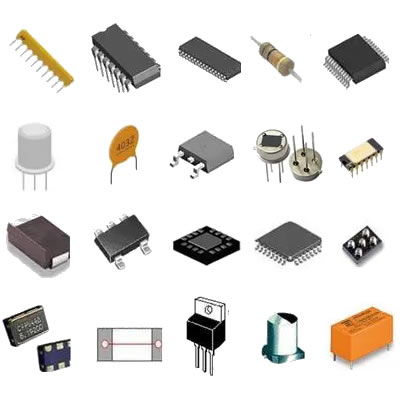Mainstream resistor diagram product series parameters
Mainstream Resistor Diagram Product Series Parameters
I. Introduction
A. Definition of Resistors
Resistors are fundamental components in electronic circuits, designed to limit the flow of electric current. They are passive devices that convert electrical energy into heat, thereby controlling the voltage and current within a circuit. Resistors come in various forms and materials, each suited for specific applications, making them essential for the functionality of electronic devices.
B. Importance of Resistors in Electronic Circuits
In the realm of electronics, resistors play a crucial role. They are used to set biasing conditions for transistors, divide voltages, and protect sensitive components from excessive current. Without resistors, circuits would be prone to malfunction, leading to potential damage or failure. Their ability to manage current flow ensures that electronic devices operate safely and efficiently.
C. Overview of the Document's Purpose
This blog post aims to provide a comprehensive overview of mainstream resistor diagram product series parameters. By exploring the types of resistors, their key parameters, and how to read resistor diagrams, we will equip readers with the knowledge necessary to select the right resistor for their applications.
II. Types of Resistors
A. Fixed Resistors
Fixed resistors have a predetermined resistance value that does not change. They are the most common type of resistors and are categorized into several types:
1. **Carbon Composition Resistors**: Made from a mixture of carbon and a binding material, these resistors are known for their high energy absorption and ability to withstand high temperatures. However, they have a higher tolerance and are less stable than other types.
2. **Metal Film Resistors**: These resistors are made by depositing a thin layer of metal onto a ceramic substrate. They offer better stability and lower noise compared to carbon composition resistors, making them ideal for precision applications.
3. **Wirewound Resistors**: Constructed by winding a metal wire around a ceramic or fiberglass core, wirewound resistors can handle high power levels and are often used in high-current applications.
B. Variable Resistors
Variable resistors allow for adjustable resistance values, making them versatile components in electronic circuits.
1. **Potentiometers**: These are three-terminal devices used to adjust voltage levels. They are commonly found in volume controls and other applications where variable resistance is needed.
2. **Rheostats**: Similar to potentiometers but typically used for higher current applications, rheostats allow for the adjustment of current flow in a circuit.
C. Specialty Resistors
Specialty resistors are designed for specific applications and include:
1. **Thermistors**: Temperature-sensitive resistors that change resistance with temperature variations. They are widely used in temperature sensing and control applications.
2. **Photoresistors**: Also known as light-dependent resistors (LDRs), these resistors change resistance based on light exposure. They are commonly used in light-sensing applications, such as automatic lighting systems.
III. Key Parameters of Resistors
A. Resistance Value
The resistance value of a resistor is measured in ohms (Ω) and is a critical parameter in circuit design.
1. **Ohm's Law**: This fundamental principle states that the current (I) flowing through a conductor between two points is directly proportional to the voltage (V) across the two points and inversely proportional to the resistance (R). The formula is expressed as V = I × R.
2. **Tolerance Levels**: Tolerance indicates the precision of a resistor's resistance value. Common tolerance levels include ±1%, ±5%, and ±10%. A lower tolerance level signifies a more precise resistor, which is crucial in sensitive applications.
B. Power Rating
The power rating of a resistor indicates the maximum amount of power it can dissipate without being damaged.
1. **Definition and Importance**: Power is calculated using the formula P = I²R or P = V²/R. Exceeding the power rating can lead to overheating and failure of the resistor.
2. **Common Power Ratings**: Resistors are available in various power ratings, typically ranging from 1/8 watt to several hundred watts, depending on their construction and intended use.
C. Temperature Coefficient
The temperature coefficient measures how much a resistor's resistance changes with temperature.
1. **Explanation of Temperature Coefficient**: It is expressed in parts per million per degree Celsius (ppm/°C). A lower temperature coefficient indicates better stability over temperature variations.
2. **Impact on Performance**: Resistors with high temperature coefficients can lead to significant changes in circuit performance, especially in precision applications.
D. Voltage Rating
The voltage rating indicates the maximum voltage that can be applied across a resistor without causing breakdown.
1. **Definition and Importance**: Exceeding the voltage rating can lead to dielectric breakdown, resulting in resistor failure.
2. **Breakdown Voltage Considerations**: It is essential to select resistors with appropriate voltage ratings based on the circuit's operating conditions.
IV. Resistor Diagram Basics
A. Understanding Resistor Symbols
In circuit diagrams, resistors are represented by specific symbols.
1. **Standard Symbols in Circuit Diagrams**: The most common symbol for a resistor is a zigzag line, while variable resistors are often depicted with an arrow indicating the adjustable part.
2. **Variations in Different Standards**: Different standards, such as IEC and ANSI, may have slight variations in resistor symbols, but the fundamental representation remains consistent.
B. Reading Resistor Diagrams
Understanding how to read resistor diagrams is crucial for circuit analysis.
1. **Identifying Resistor Values**: Resistor values are often indicated by color codes or numerical values next to the symbol. Familiarity with these codes is essential for accurate identification.
2. **Understanding Circuit Connections**: Recognizing how resistors connect with other components in a circuit helps in understanding the overall functionality and behavior of the circuit.
V. Mainstream Resistor Product Series
A. Overview of Popular Resistor Series
Several mainstream resistor series cater to different applications:
1. **Series A: General Purpose Resistors**: These resistors are suitable for a wide range of applications, offering a balance between cost and performance.
2. **Series B: Precision Resistors**: Designed for high accuracy and stability, these resistors are ideal for applications requiring precise measurements.
3. **Series C: High-Power Resistors**: Built to handle high power levels, these resistors are used in applications such as power supplies and motor controls.
B. Comparison of Product Series
When selecting a resistor, it is essential to compare the features of different product series.
1. **Key Features**: Consider factors such as tolerance, temperature coefficient, and power rating when evaluating resistor series.
2. **Applications and Use Cases**: Understanding the specific applications for each series helps in making informed decisions based on project requirements.
VI. Selecting the Right Resistor
A. Factors to Consider
Choosing the right resistor involves several considerations:
1. **Application Requirements**: Assess the specific needs of the circuit, including resistance value, power rating, and tolerance.
2. **Environmental Conditions**: Consider factors such as temperature, humidity, and potential exposure to contaminants that may affect resistor performance.
B. Common Mistakes in Resistor Selection
Avoiding common pitfalls can lead to better circuit performance:
1. **Underestimating Power Ratings**: Selecting a resistor with an insufficient power rating can lead to overheating and failure.
2. **Ignoring Tolerance Levels**: Failing to account for tolerance can result in inaccurate circuit behavior, especially in precision applications.
VII. Conclusion
A. Recap of Key Points
In summary, resistors are vital components in electronic circuits, with various types and parameters that influence their performance. Understanding these factors is essential for effective circuit design.
B. Importance of Understanding Resistor Parameters
A solid grasp of resistor parameters, including resistance value, power rating, temperature coefficient, and voltage rating, enables engineers and hobbyists to make informed decisions when selecting resistors for their projects.
C. Encouragement for Further Learning and Exploration
As technology continues to evolve, the importance of resistors in electronic design remains steadfast. We encourage readers to explore further and deepen their understanding of resistors and their applications in the ever-expanding world of electronics.
VIII. References
A. Suggested Reading Materials
1. "The Art of Electronics" by Paul Horowitz and Winfield Hill
2. "Electronic Principles" by Albert Malvino and David Bates
B. Online Resources for Further Study
1. Electronics tutorials on websites like All About Circuits and Electronics-Tutorials
2. Manufacturer datasheets for specific resistor series and types
By understanding the parameters and applications of resistors, you can enhance your electronic projects and ensure their success. Happy tinkering!





